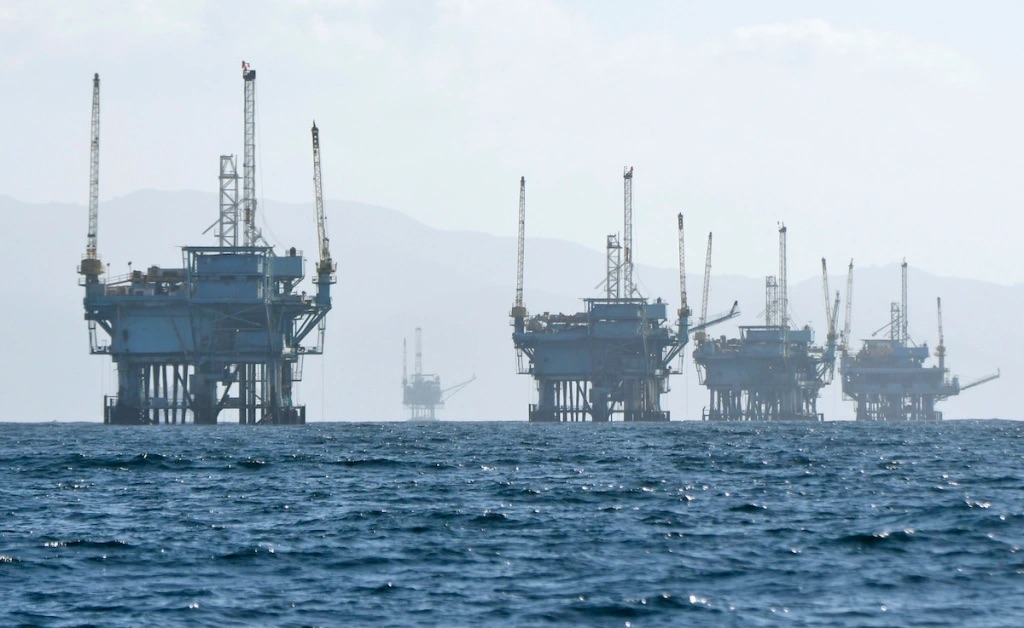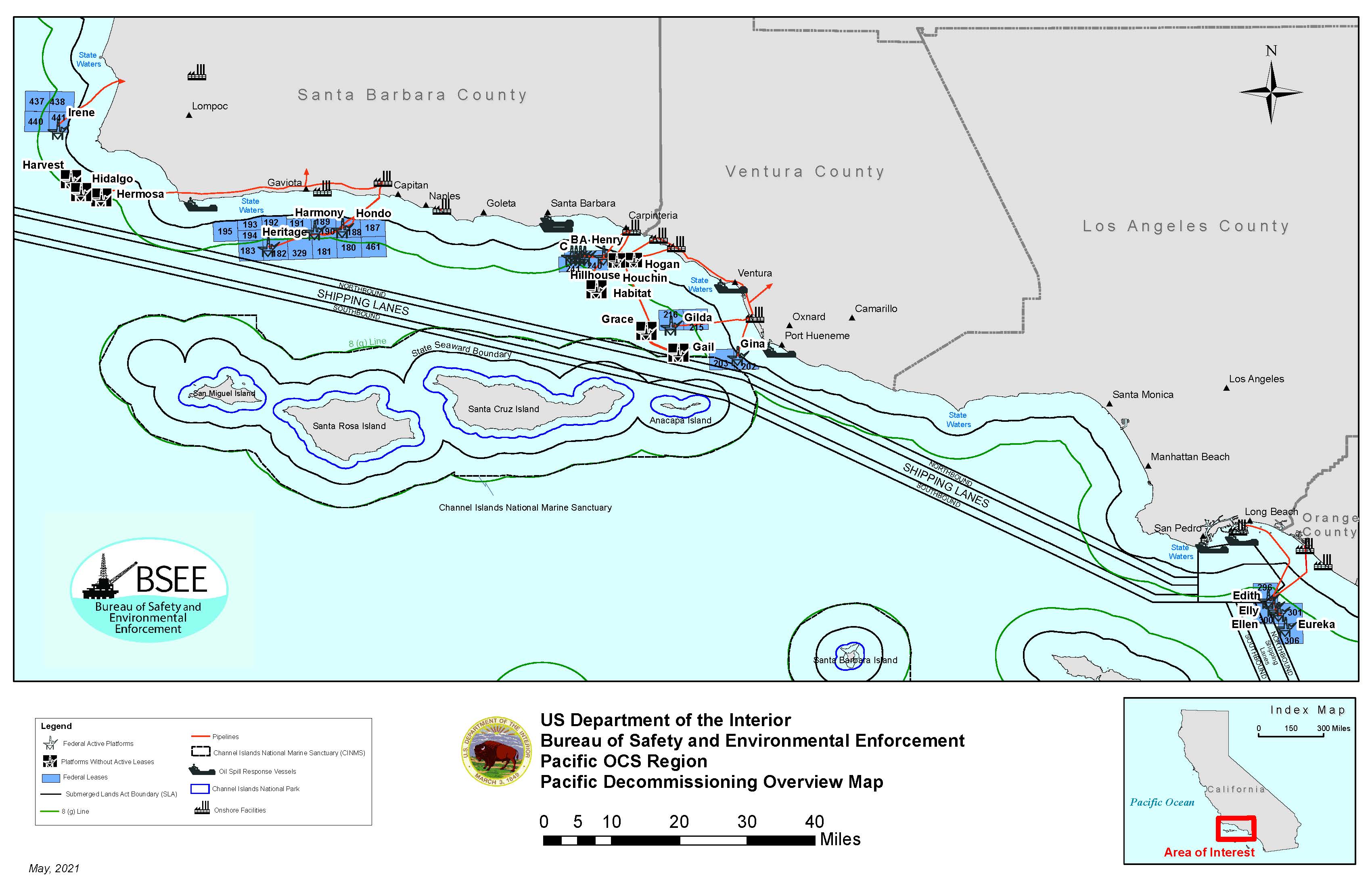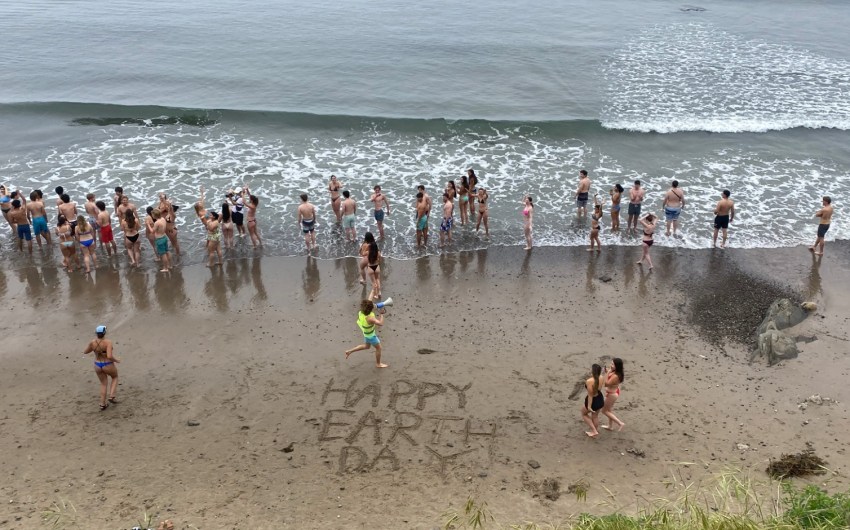Erasing Santa Barbara’s Offshore Platforms
Environmental Authorities Choose Complete Removal as Preferred Decommissioning Method

Anyone traveling down the Southern California coast can wave goodbye to the oil and gas platforms that have long loitered on the horizon. Everything must go, the Bureau of Safety and Environmental Enforcement (BSEE) decided this month.
All 23 of the coast’s obsolete offshore facilities — installed between the late 1960s and 1990 from Santa Barbara to Orange County — are at the end of their lifespans and subject to eventual decommissioning.
The preferred method outlined by BSEE is the complete removal and disposal of the remnant oil and gas infrastructure, from the platforms above the water’s surface to the supports and equipment below.
“It’s great that the federal government finally has a loose game plan for getting oil companies to clean up their rusty messes,” said Miyoko Sakashita, oceans program director at the Center for Biological Diversity.
Before any million-dollar removal processes (removal of all 23 would cost more than $1.6 billion) can begin, however, the wells will first have to be properly plugged, and potential environmental impacts from infrastructure removal will need to be assessed. For eight of those out-of-date facilities, the well-abandonment process is underway or has already been completed.
But while some are gung-ho about it all being wiped off the map, others are not too keen about the permanent loss of the structures that have become manmade reefs over the last 50 years.

[Click to enlarge] BSEE Decomissining Map: A map of the 23 obsolete oil & gas platforms subject to decommissioning off the Southern California coast. | Credit: Courtesy
Complete removal (with potentially explosive methods) of the offshore infrastructure is not the most environmentally friendly option from the Programmatic Environmental Impact Statement — different alternatives would leave some pieces in place to minimize seafloor disturbance and habitat loss for the community of marine organisms that have made a home beneath the platforms.
However, BSEE claims that leftover infrastructure could pose risks such as entanglement of fishing nets or ship anchors and leaching of potentially hazardous materials present in shell mounds around the base of the platforms.
Complete removal, BSEE says, “ensures no oil and gas infrastructure will remain … that could interfere with navigation, commercial fisheries, and other current or future ocean users,” and would involve to-be-determined mitigation measures for any resulting adverse environmental impacts.
“BSEE considered many factors in this decision, including comments from Tribes, federal, state, and nongovernmental organizations,” said BSEE Director Kevin Sligh. “This critical decision will guide BSEE on all future decommissioning applications to remove oil and gas platforms, associated pipelines, and other facilities offshore Southern California.”
Premier Events
Thu, May 02
5:00 PM
Santa Barbara
Things with Wings at Art & Soul
Sat, May 04
10:00 AM
Lompoc
RocketTown Comic Con 2024
Wed, May 01
7:30 PM
Santa Barbara
American Theatre Guild Presents “Come From Away”
Thu, May 02
5:00 PM
Santa Barbara
100th Birthday Tribute for James Galanos
Thu, May 02
5:00 PM
Santa Barbara
Meet the Creator of The Caregiver Oracle Deck
Fri, May 03
4:00 PM
Santa Barbara
Santa Barbara Fair+Expo “Double Thrill Double Fun”
Fri, May 03
8:00 PM
Santa barbara
Performance by Marca MP
Sat, May 04
10:00 AM
Solvang
Touch A Truck
Sat, May 04
11:00 AM
Santa Barbara
Mental Wellness Center’s 28th Annual Arts Faire
Sat, May 04
11:00 AM
Santa Barbara
Community History Day
Sat, May 04
3:00 PM
Solvang
The SYV Chorale Presents Disney Magic Concert
Sat, May 04
7:00 PM
Santa Barbara
A Star Wars Cantina Celebration: Renegades, Rebels, and Rogues
Thu, May 02 5:00 PM
Santa Barbara
Things with Wings at Art & Soul
Sat, May 04 10:00 AM
Lompoc
RocketTown Comic Con 2024
Wed, May 01 7:30 PM
Santa Barbara
American Theatre Guild Presents “Come From Away”
Thu, May 02 5:00 PM
Santa Barbara
100th Birthday Tribute for James Galanos
Thu, May 02 5:00 PM
Santa Barbara
Meet the Creator of The Caregiver Oracle Deck
Fri, May 03 4:00 PM
Santa Barbara
Santa Barbara Fair+Expo “Double Thrill Double Fun”
Fri, May 03 8:00 PM
Santa barbara
Performance by Marca MP
Sat, May 04 10:00 AM
Solvang
Touch A Truck
Sat, May 04 11:00 AM
Santa Barbara
Mental Wellness Center’s 28th Annual Arts Faire
Sat, May 04 11:00 AM
Santa Barbara
Community History Day
Sat, May 04 3:00 PM
Solvang
The SYV Chorale Presents Disney Magic Concert
Sat, May 04 7:00 PM
Santa Barbara

























You must be logged in to post a comment.